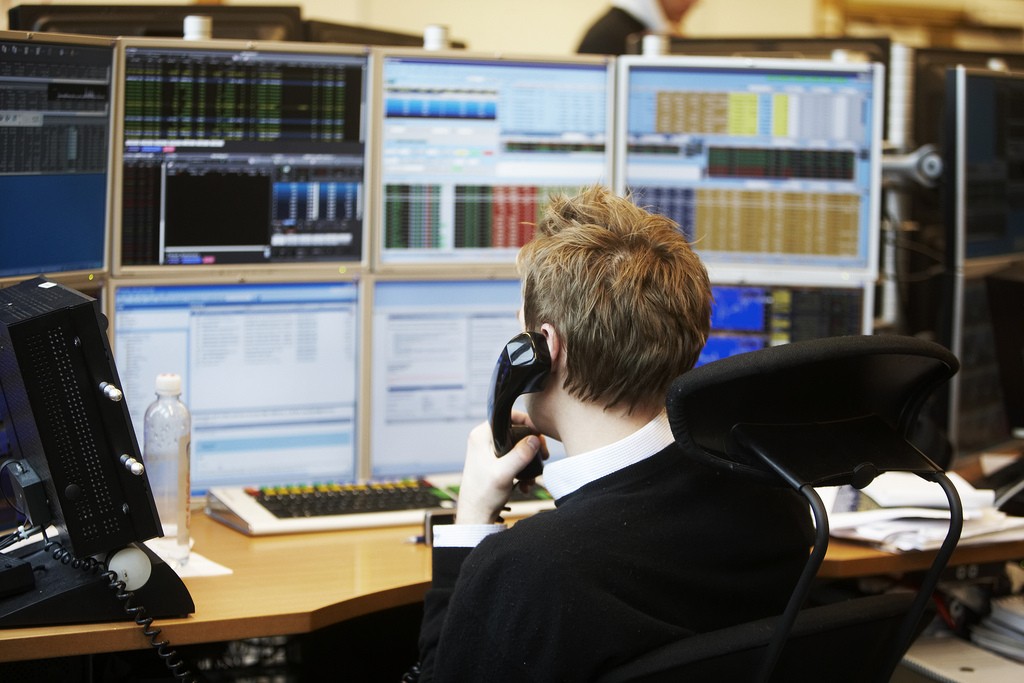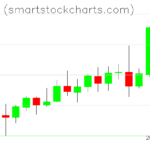11 Reasons Why ETFs are Better than Stocks
11 Reasons why you need to stop picking Stocks and buy ETFs instead!
If you’ve followed my blog for some time, you may realize that I’m a big fan of ETFs, particularly highly liquid ETFs with low fees and an established track record. Although ETFs seem pretty bland compared to the latest financial innovations like Binary Options, Credit Default Swaps, etc., they are probably some of the most useful innovations to emerge in the last several decades for the retail trader and investor. If you’re new to investing, then I highly urge you to read this list first before you jump on CNBC and start buying the hottest stocks. And if you’re a seasoned investor in stocks, then I still would like you to consider the benefits of having ETFs in your portfolio and the how they’ll save you plenty of time, energy, and mental resources in managing your portfolio.
#1: Most stocks lose money in the long run
Think you can pick the next Google or Tesla? Think again! According to a study done by Blackstar Funds LLC, 2 out of every 5 stocks in the Russell 3000 had a negative return over its lifetime including nearly 1 out of 5 losing at least 75% of its value. In fact, over 3 out of 5 stocks in the index underperformed the index itself (from 1983 to 2007)! Only about 1 out of 5 stocks had a cumulative return that’s 300% higher than the index and about 1 out of 16 had a cumulative return 500% higher. These rare winners ended up accounting for the vast majority of returns that the index exhibited.
If you surveyed a large group of investors who bought and held stocks from 1983 to 2007, most of them would have underperformed the index and a few would have outperformed, perhaps by a fair amount. Whether they picked one of the lucky winning stocks or not determined whether they beat the market. Btw, many of the stocks trading in 1983 are no longer here today and the overall performance of an ETF will account for the losers, unlike picking the stocks that are trading today (which are “survivors“.) By holding an index ETF with a diversified pool of stocks rather than assembling your own portfolio of 5-10 stocks, you’ll have a much better chance of including those rare winners in your portfolio which more than make up for the numerous losers.
#2: It’s less volatile than the individual components
A diversified portfolio of hundreds or even thousands of penny stocks, subprime mortgages, or even young tech companies will still be more volatile than your average blue-chip stock in the Dow. However, the index itself will likely exhibit less volatility than the vast majority of individual stocks which compose itself. The average Dow stock is generally more volatile than the Dow. The average Nasdaq stock is generally more volatile than the Nasdaq. In other words, the index ETF will generally exhibit less gut-wrenching moves day to day and is more robust against collapse or other negative black swan events compared to the individual stock or even a portfolio of a few stocks.
#3: You get the benefits of diversification
Most ETFs contain hundreds or even thousands of different stocks. If you pick stocks yourself, you’re subject to the familiarity bias: only picking stocks from the industries you’re familiar with. You may be familiar with the age-old maxim that you should “only invest in what you know” and that is better than investing in what you don’t know should you choose to pick stocks. But heavily concentrating your investment portfolio in a limited set of industries will only expose you to more risk and black swans should one of the industries you’re invested in suffers in the future.
#4: Easier to do due-diligence on
There’s a lot of debate on the subject but studies have shown that it’ll take anywhere between 20-100 stocks in a portfolio before its unsystematic risk is statistically insignificant and it behaves almost entirely like the corresponding market portfolio. That’s a lot of stocks to research and read the quarterly and annual reports on! On the other hand, you can get a single prospectus and report on your ETF from Morningstar or the ETF provider itself and go through that instead of reports for countless stocks.
#5: You pay less in commissions and other overhead
When you buy an ETF, you only pay a commission to your broker and a nominal fee (usually less than 1% per year.) If you’re buying the same stocks individually, you’ll need to pay a separate commission for each stock. Yes, your ETF manager still has to pay commissions to their broker to buy the stocks in it but due to the economies of scale from managing millions or billions of dollars, they pay a commission that’s relatively insignificant to their assets under management due to economies of scale. Those savings then get passed along to you in the form of a (usually) very minor fee.
#6: You don’t need to monitor a dozen or more stocks constantly.
If you ask any of your random friends to picture a trader, an image like the following might conjure up in their minds:
Unless you’re trading a fairly long time frame (aka investing), you’ll most likely need to monitor your holdings on a daily basis. Doing that with less stocks is manageable but doesn’t leave you well diversified. And doing so with too many stocks is just plain overwhelming. If you want the diversification without the overwhelm, stick with an ETF index fund.
#7: It’s easier to trade in and out of an ETF than a basket of stocks simultaneously.
ETFs are just one single security. You can pursue short-term trading strategies on an ETF with ease and receive the diversification benefits that come with it. Contrast that with trading in and out of a basket of stocks simultaneously. It’s a lot easier to make mistakes or to rack up slippage costs when you’re trading in and out of 10 or more stocks at a time on a regular basis.
#8: It’s easier to AUTOMATICALLY get out of an ETF when your loss threshold is met
Suppose the strategy you’re trading calls for going long the Dow Jones Industrial Average and you have a loss threshold of 5%. If you’re manually implementing the index, you’ll need to buy all 30 stocks in it. And if you want to enforce that loss threshold, you’re gonna need to constantly monitor your PnL and sell all 30 stocks when it gets to -5%. Wouldn’t it be easier to buy an index ETF, say, DIA, instead of 30 stocks? (And if your portfolio of stocks doesn’t correspond to any index, you can probably find an index that closely matches it in performance.)
Another great thing about index ETFs is that you can set stop losses and buy put options on most of them. That way, you can automatically enforce your loss thresholds. Since each stock behaves independently (even if they’re correlated), you can’t set a stop loss at -5% for each individual stock or buy puts that enforce a similar loss threshold for each and expect your portfolio to automatically exit itself exactly when your threshold is met. (You might have one stock might be down -20% while another is up 10% and another is up 5% and so on for an overall loss of -5%.)
#9: You have access to other countries’ stocks and indices
There are specialized ETFs trading in the US that allow you to invest in many developed and emerging market indices. Although you can buy some foreign stocks via ADRs in the US, many of these indices include stocks that are not traded on the US exchanges. ETFs are a very attractive vehicle for US investors to diversify internationally without taking on too much risk since it can be more difficult to obtain reliable research and insights on some foreign companies, especially in English.
#10: You have access to alternative asset classes
There’s a wide range of asset classes available to invest in using ETFs including commodities, real estate (via REITS), foreign currencies, bonds, etc. Please note that some of these ETFs may not be well diversified (i.e. a Gold ETF only has gold, an oil ETF only has crude oil, etc.) but they allow you to buy asset classes that you normally would not be able to buy in a standard discount brokerage account for stocks. While buying a single stock ETF isn’t being well diversified to the max, it’s better than most investors; but having an asset allocation spanning 2 or more asset classes will only further strengthen your portfolio’s robustness (but that’s a post for another day.)
#11: They can shield yourself from seeing big red losses in your statements.
Face it, you, like most people, probably panic when you see gut-wrenching losses in your portfolio even if they’re offset by gains elsewhere. When you pull up your account and see a stock down -10% or has lost $1000, your stomach sinks even if your overall portfolio performance is fine. Investing in an ETF can shield you from the losses here and there in your portfolio from a dozen or so stocks and get you to focus on the overall performance which is what really matters.
Final Remarks
ETFs are some of the most underrated financial instruments rarely catching the spotlight on CNBC or other financial news networks. Nevertheless, they offer some of the cheapest yet convenient ways to diversify a portfolio and protect it from systematic risk. If you know of any additional benefits from trading or investing in ETFs, please leave them in the comments below!




